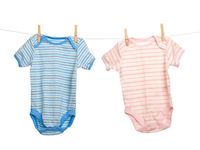
School uniform policies are often the subject of mass media attention and commentary by the public, and usually the question is around whether a certain style of clothing is appropriate for wear by boys and girls.
But gender isn't a binary thing, and in any case the binary definitions of what constitutes boys' and girls' are impositions by largely western cultures in extremely recent years. Driven by product marketing, the need to brand things as 'girls' clothing or 'boys' clothing can be traced back to companies trying to get parents to buy things twice, if they have children of different genders. Certainly, the pink and blue divide in clothing, toys and furniture hasn't always been the case, and is not representational of how other cultures define gender (many don't have binary definitions like western cultures have traditionally).
This article by the Smithsonian looks at the changes in gendered clothing, what influenced the changes and what affects it has had on how parents, children and society in general react to having a gender labelled from an early age.

We recommend reading this article and reflecting on students' physical and social developments and characteristics may be Teacher Identified PD and align with Standard Descriptor 1.1.2 "Use teaching strategies based on knowledge of students' physical, social and intellectual development and characteristics to improve student learning" and Standard Descriptor 4.4.2 "Ensure students' wellbeing and safety within school by implementing school and/or system, curriculum and legislative requirements where it pertains to not discriminating against students due to their gender and providing for their safety and wellbeing inside the school.